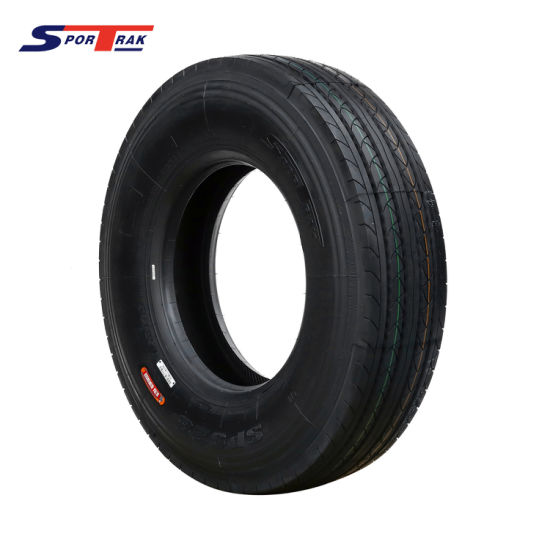Click below to contact our Sales Representative, David Horton.
click here to buy now
Founders M/T Super Singles are designed and built for a specific purpose; to allow Ford F-450/550, Dodge Ram 4500/5500, and similar trucks to maintain their intended GVW with a super single tire while also providing superior longevity compared to any other tire its size. It features a tread design optimized for clearing mud/sand/snow while keeping enough rubber on the road to prevent overheating, wear, and blowouts inevitable with over-aggressive tread patterns.
Tire Size: 305/70R19.5
Max Load: 6610 lbs
Load Range: J
Max Inflation Pressure: 120 PSI
Ply Rating: 18 PR
Load Index: 146/43
Speed Rating: K (68mph)
A. No, in order to fit Founders M/T onto your truck, you will need to install a lift kit as well as trim your fenders. We offer Tuff Country® lift kits as an option for each set of tires we sell, for Ford® trucks, meaning the lift kit and tires will ship together as a complete super single conversion kit. If you have a Dodge® or other make truck, you’ll have to purchase your own 2.5” lift kit separately.
A. The life of your tires will depend on many factors, including your vehicle weight, percentage of driving on/off road, and your style of driving. They were engineered to provide the best combination of longevity, traction and durability.
A. Here's why:
They provide added chassis/suspension clearance over ground obstacles.
Their tread pattern is designed for superior traction in soft/muddy ground conditions, not to mention added on-road traction in wet and snowy conditions.
Their extra width provides "flotation" in sandy/soft conditions.
The sidewall is designed for abrasion and puncture resistance.
Single tires negate the possibility of objects catching between the factory dually tires and blowing out the tire(s).
A. Absolutely. You'll need some equipment though, most importantly a complete set of wrenches and a floor jack to lift your truck off the ground. You'll also want a rubber mallet and some anti-rust lube for any rusted on parts you may have to remove. You will NOT need to do any welding to install this kit. If you work efficiently with a buddy, you can have the tires installed by the end of the day but you'll probably want to give yourself a weekend. Just make sure you order the tires with powder-coated wheels already installed by Firematic. If wrenching isn't your thing, you can always have the kit installed by one of our certified dealers or your local mechanic.
A. They do not affect the warranty in any way.
They do not affect the warranty in any way.
4x 305/70R19.5 Founders M/T Tires
4x Custom Heavy Duty Steel Wheels
1x Tuff Country Lift Kit
2x Rubber Fenderettes and Aluminum Sheet Fillers for Wheel Well
4x U-Bolts
2x 3" Lift Blocks for the Rear
Contact Us for pricing and availability.
We now offer our exclusive Hutchinson Aluminum 2 Piece 19.5" x 9.75" Bead-Lock Wheels as an upgrade on all Founders M/T Super-Single Kits over the base steel wheels. The Bead-Lock allows you to air your Founders M/T Tires all the way down to 0psi, maximizing the contact patch in low grip situations. If you’re looking to take your truck to the next level, these are the wheels for you. Contact Us for pricing.
Contact Firematic (USA & International Distributor)
*Firematic Supply Co.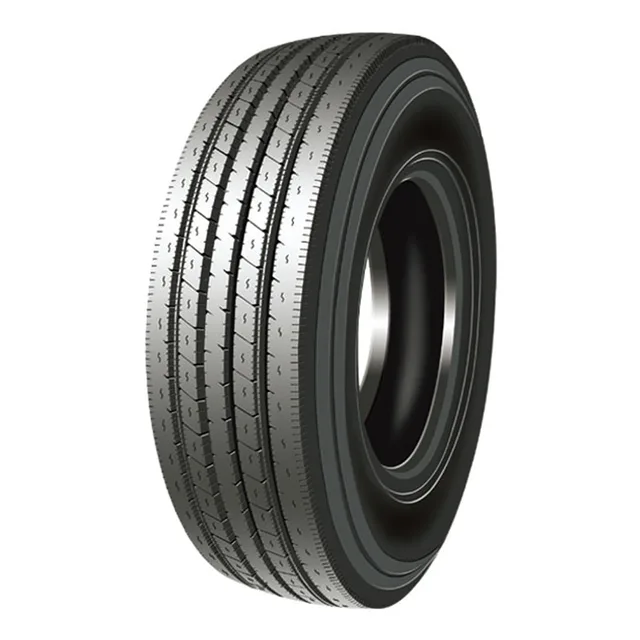 handles all distribution for the United States as well as internationally (excluding Australia). If you are not in the United States or Australia, contact Firematic Supply Co. for orders.
handles all distribution for the United States as well as internationally (excluding Australia). If you are not in the United States or Australia, contact Firematic Supply Co. for orders.
Contact Chris Campbell @ ATW
* All Terrain Warriors is the exclusive Founders M/T 305/70R19.5 distributor for all of Australia.
Stock Sized Radial
Often you’ll see dually trucks driving down the road towing large fifth-wheel campers or towing a flatbed with heavy equipment. It has long been known that dual rear wheels provide better stability and weight capacity than single rear wheels. But with dual rear wheels, there are also some disadvantages. Enter one solution: super single dually tires. What are those?
Let’s take a look and learn more about why some owners are installing singles in place of their duals.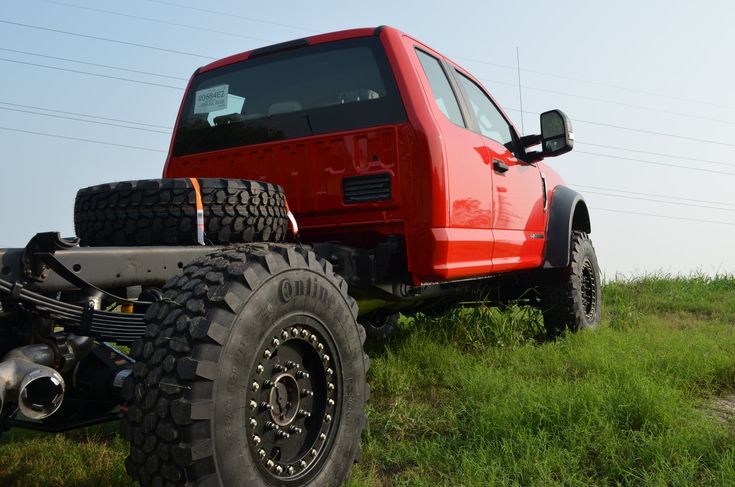
Dually trucks are heavy-duty trucks with two rear wheels on each side. Usually, you’ll notice the rear fender wells stick out farther to cover both tires. These dually trucks tow heavy loads either in the truck’s bed or behind the truck.
➡ Looking for more info on dual rear-wheel trucks? Check out our deep-dive here: Dually Truck: What Is it and Do You Need One for Towing?
Notice the dual rear wheels on this F-350—this a traditional dually truck used for towing a fifth wheel camper.A super single replaces the double rear wheels found on each side of a standard dually truck with single wide-base tires. These tires can replace two wheels, which means an 18-wheeler semi-truck can become a 10-wheeler semi-truck. For trucks and off-road vehicles, switching to a super single dually improves off-road capabilities. This is because on uneven terrain one tire of a dually is frequently off the ground and traction is greatly reduced.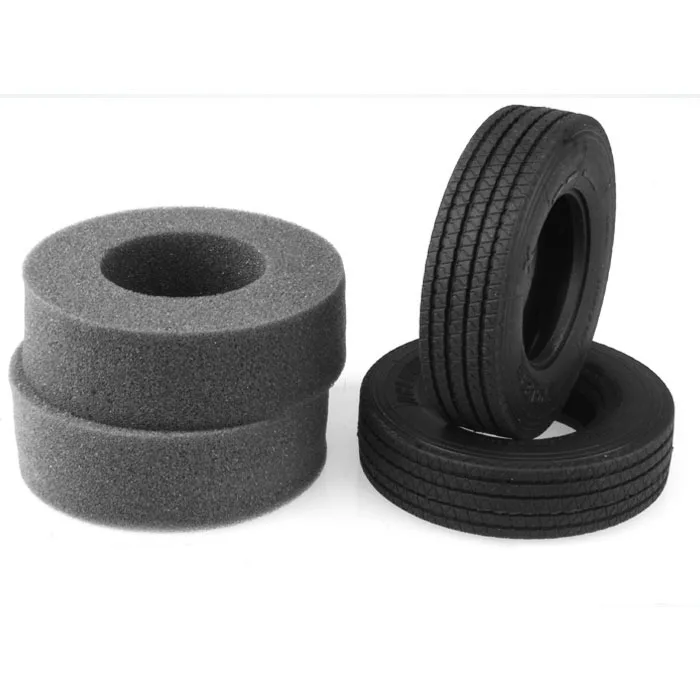 It also eliminates the chances of rocks getting stuck between the double rear wheels found on traditional dually trucks.
It also eliminates the chances of rocks getting stuck between the double rear wheels found on traditional dually trucks.
Super singles are not just big tires like you see on some trucks, they are big tires that can handle the weight and are significantly different. If your looking for big tires for aesthetics or just off-road performance, super singles are most likely not what you’re looking for.
Manufacturers won’t put super singles on dually trucks. However, owners have put on aftermarket tires.
One Ford F-450 owner, Mike Brandl, shares his experience with his super single dually in an article in Truck Camper Magazine. He bought Goodyear G275 MSA 335/80/R20 military tires that are 41″ tall and 14″ wide. Their speed rating is over 80 mph, and each tire has a capacity of over 6,300 lbs. They weigh over 200 lbs each, which is much heavier than the 44-lb stock tires. He believes these tires provide a smoother ride with his truck camper. These are the same tires we run on our Ram 5500.
Another owner wanted super singles put on his King Ranch dually. Extensive fender modifications accommodate the larger size because he had no interest in lifting the truck. An additional modification included removing the rear block to lower the truck a bit and create a better distance from left to right in the wheel hub. He added a new set of Bridgestone tires 39.5″ tall to the front to match the height of the super single tires.
Shared on https://www.thedieselgarage.com/threads/project-super-single-dually.96850/ The Owner of this truck modified his dually with super single semi truck tires.We own a flatbed Ram 5500 that was originally a dually truck. It was converted to a super single running continental agricultural tires that chose to replace with military-grade super singles. The Continental tires were great for off-roading but were loud going down the highway and didn’t have a high speed or weight rating. The new military-grade tires are better on softer soils. Each tire is rated at 7,000 lbs and will still hold this rating even when the pounds per square inch (PSI) drop into the teens because they are on bead lock rims.
The new military-grade tires are better on softer soils. Each tire is rated at 7,000 lbs and will still hold this rating even when the pounds per square inch (PSI) drop into the teens because they are on bead lock rims.
Think A One Ton Truck Is Big Enough? What Are The Differences And Why You Might Want A 550 or 5500?
Watch this video on YouTube
In theory super, single tires can perform the same task as duals. They have much higher weight ratings and can carry the load with just one tire in place of two. From a functionality perspective they perform about the same.
However, depending on what type of traveling you’re doing, super singles may perform better. If you’re overlanding or boondocking in remote locations and driving on rough terrain consistently, choosing to install super singles and doing the modifications might be worth it.
However, you’ll wear them down faster than dual wheels and they usually have lower speed ratings. It’s also important to weigh the pros and cons. Super singles are much more expensive. So even if they do out-perform dual rear wheels, it may not be cost-effective for some travelers.
It’s also important to weigh the pros and cons. Super singles are much more expensive. So even if they do out-perform dual rear wheels, it may not be cost-effective for some travelers.
Although only aesthetic, many owners like the look of a super single dually. But the overall performance is the biggest benefit. According to Truck Camper Magazine, “In the semi-truck world, super singles can reduce rolling resistance and weight of a truck and trailer and have been shown to improve fuel economy by up to 3%.”
Super single dually trucks are a good choice for overlanding and boondocking.Factory 32-inch diameter, 6-inch wide, 10-ply dual rear wheel tires can handle large loads or tow large RVs on many dually trucks. But when upgraded to single 41-inch diameter, 12-inch wide, 22-ply military tires, the off-road performance is much better.
EarthRoamer, a popular overlanding vehicle maker, claims that super single dually trucks have better tracking for off-road capabilities. The military-grade tires also have a higher weight rating per tire.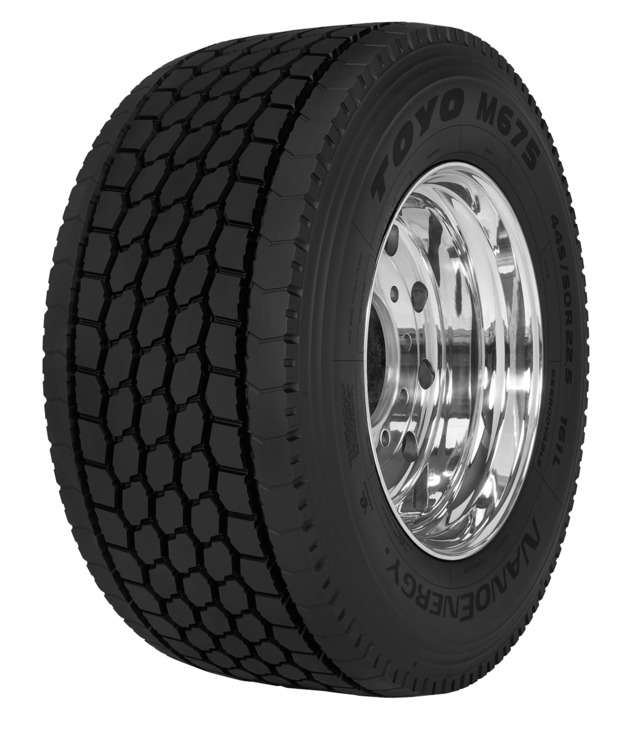
In addition, the ride in a dually truck can be rough, especially when not towing. A super single dually will have a better feel going down the interstate. Plus, rocks can easily get stuck between two rear tires. Super singles eliminate this problem.
EarthRoamers have super single tires.This doesn’t mean that super singles are the right answer for everyone, though. Like in the King Ranch example above, there can be extensive modifications and complexities to converting from a dually to a super single dually.
More Truck Articles You’ll Love:
Upgrading to super singles is expensive. Our tires alone cost $800 a piece not including rims. The cost to modify our truck to a super single came in close to $20,000.
Another disadvantage is the traction. Although super single dually tires perform better off-road and on softer terrain like sand, dually tires tend to perform better on highways in wet conditions.![]()
Another disadvantage is lifting the truck. The King Ranch owner above didn’t want to install a lift, so extensive modifications were needed. Our Ram 5500 was lifted 4 inches which make an already tall truck harder to get into. So super single dually tires raise the center of gravity of the truck.
That’s not photoshopped the truck really is that tall! Its quite a climb to get into it.Pro Tip: Make sure you understand how lifting a truck can affect its towing capabilities before making the switch. Learn more here: Can You Tow an RV with a Lifted Truck?
Balancing the tires is also a challenge. Most tire shops don’t have a balancer strong enough to fit the tire size, so it can take several different trips to find a place to get them properly balanced. Because of this we need to run Centramatic balancing rings.
This is also true for installing a new tire. Tire shops don’t carry super single dually tires. So a spare tire is your only lifesaver. You’ll have to find a tire shop that deals with semi-trucks and dump trucks to perform any maintenance and repairs.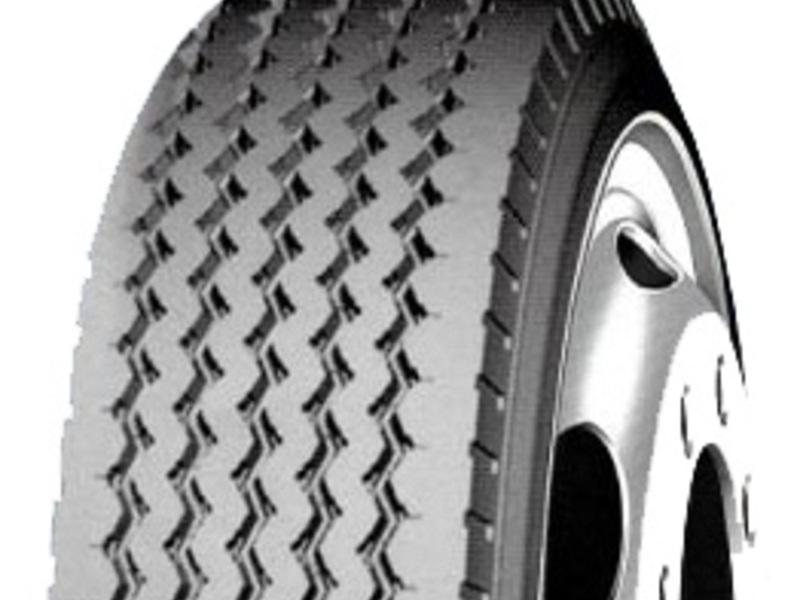
This question is up for debate among drivers. Some have had no problems in the snow, while others have experienced challenges. Founders M/T 305/70R19.5 super singles feature “a tread design optimized for clearing mud/sand/snow.” But drivers also give horror stories of sliding around with their super single dually tires (not necessarily made by Founders).
If you spend more time driving on the highway than on dirt or sand, you may want to stick with dually tiresWe currently run Goodyear G275 MSA 335/80/R20 military tires. As mentioned above, they’re 41″ in diameter and 12″ in width. This is about 9″ larger in diameter and twice as wide as standard factory tires on most dually trucks.
Farmers also use super singles on their farm equipment. In North Dakota, 17-inch wide super singles are common to help carry heavy loads of grain or beets. Tractors may not need as many modifications as a truck, but as mentioned above, a lift or extensive conversions are needed to accommodate the larger tire size on trucks.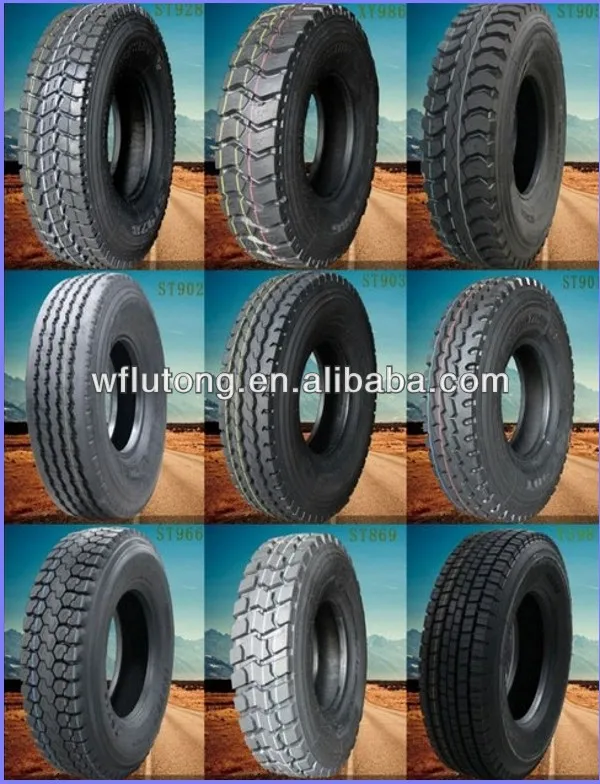
You’ll have to weigh the pros and cons of installing super singles on your truck. Some owners think it’s worth it. However, it’s an involved process and also expensive. As with all types of tires, there are advantages and disadvantages. So consider where you travel and how often you travel before making the change.
Personally, I would only go with super singles if you plan to carry a lot of weight over offroad terrain regularly. This is really the only way to justify the cost and downsides to super singles.
Want a super single dually but not interested in doing modifications? Consider buying a used vehicle that’s already been converted. Here’s How to Find Used Overland Vehicles for Sale (And Where We Found Ours).
Join 10,000+ other adventurers to receive educating, entertaining, and inspiring articles about RV Travel Destinations, RV Gear, and Off-Grid Living to jump-start your adventures today!
Join Us Today!
Read More From The Mortons:
Latest Articles:
03. 11.2016 Media about us
11.2016 Media about us
Quincy, Illinois, October 21, 2016 / PRNewswire / - Farmers across the country say Goodyear® Farm Tires with Low Sidewall Technology (LSW®)™ made by Titan provide less soil compaction, less resonant vibration and more comfortable ride. Mark Stallings of Charleston, Missouri wanted to see for himself that the LSW Goodyear Super Single tires would increase yields and income for his farm, so he installed them last spring for field trials in corn and soybean fields, and his yield actually increased. . Titan International Chairman and CEO Morris Taylor and President Paul Reitz recently met with Mr. Stallings, a farmer and owner of a Delta New Holland dealership, to discuss the results.
Mr. Stallings has been testing low sidewall LSW Super Single tires alongside standard Michelin dual tyres. Selecting two fields with the same conditions, he seeded them with Pioneer 2089YHR grain purchased from Rowling Moxley Ag in Charleston, MO and Bayer Credenz 4878 soybeans purchased from MRM Ag Services in East Prairie, Missouri.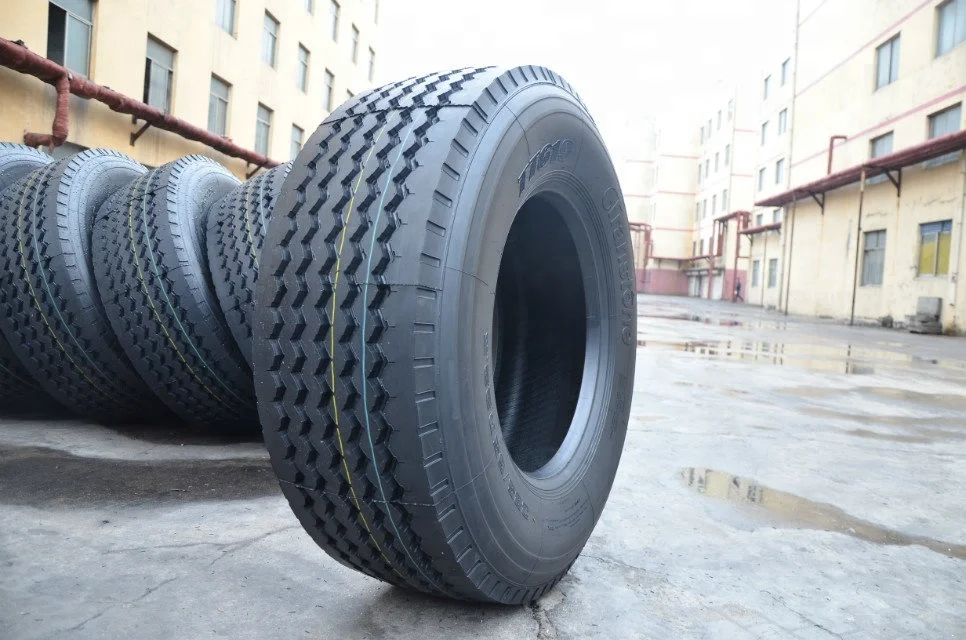 Experienced agronomists, Mikkel Jake and Brandon Dirnberger, from Wheat Tech Agronomy, oversaw the trials. Last spring, these plots were sown in alternating rows using two identical New Holland T-8 255 hp tractors. and 16-row Kinze 3600 planters. The first tractor was fitted with dual Michelin tires in the following sizes: 380/80R38 20 psi front tires and 480/80R50 rear 15 psi tires. The second tractor was fitted with 12 psi Goodyear LSW1000/40R32 front tires and 8 psi Goodyear LSW1100/45R46 rear tires.
Experienced agronomists, Mikkel Jake and Brandon Dirnberger, from Wheat Tech Agronomy, oversaw the trials. Last spring, these plots were sown in alternating rows using two identical New Holland T-8 255 hp tractors. and 16-row Kinze 3600 planters. The first tractor was fitted with dual Michelin tires in the following sizes: 380/80R38 20 psi front tires and 480/80R50 rear 15 psi tires. The second tractor was fitted with 12 psi Goodyear LSW1000/40R32 front tires and 8 psi Goodyear LSW1100/45R46 rear tires.
The following are tire track depth measurements taken during the corn planting: an average of 1.580 for the Goodyear LSW Super Singles versus 2.550 for the Michelin duals.
| | Single tires Goodyear Farm Tires LSW Super Single | Dual tires Michelin | |||||
| Average value | 1.625 | 2.625 | |||||
Min.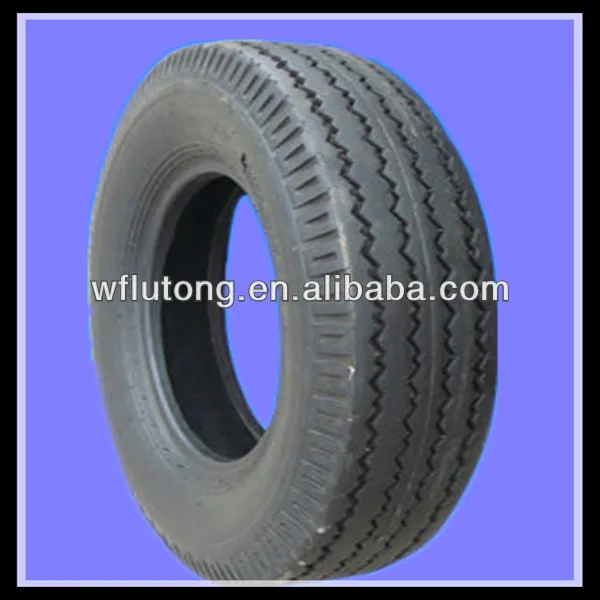 | 0.500 | 1.000 | |||||
| Max. | 2.875 | 4.250 | |||||
| Limit | 2.375 | 3.250 | |||||
| Wed off | 0.515 | 0.634 | |||||
| Average | 1.580 | 2.550 | |||||
The increase in soil compaction is the result of the standard dual tires. In addition, the pressure of narrow twin tires causes rutting between the tires. This effect of narrow twin tires has a negative effect on yield and root growth due to poor seed germination. The figure shows the center row spacing of corn, showing the tires on the tractors. A 20 percent increase in footprint of the Goodyear LSW tire reduces ground pressure. In the photo you can see a comparison of corn stalks: a field where a tractor with LSW tires was working grew taller and healthier corn (stalks on the right).
In September, results from the corn crop showed that a site running a tractor with Goodyear LSW tires harvested 5 bushels per acre more than dual Michelin tires; on average, 179.01 bushels per acre versus 174.01 bushels per acre, respectively. That's $16 more per acre for Mr. Stallings, plus the 5% savings on fuel costs. Soybean crop results showed that the site, where the tractor worked with Goodyear LSW tires, harvested 6 bushels per acre more than with dual Michelin tires; On average, 83 bushels per acre versus 77 bushels per acre, respectively. Thus, the farmer received up to $60 per acre in addition to income. The increase in yields and the correct operation of the tires fully pays for the replacement of conventional tires with LSW tires in less than a year.
In northwest Illinois, Titan is testing in other fields where it plans to confirm the Missouri test results. Morris Taylor said: “The entire LSW tire development team is very excited about this news as it was important for us to get real data from farmers on the success of the tires in the fields and thereby validate Titan’s claim that these tires improve performance. I am very happy for our Titan team and in the future we look forward to working with farmers and dealers to increase their profits Farm equipment manufacturers will understand the benefits of Goodyear Farm LSW low sidewall tire technology and will be surprised that these LSW tires could have stood on their equipment five years ago." Stallings also noted that other farmers want to see the LSW Super Singles tires and are asking him about increasing yields. In the meantime, Frank Stallings (Mark's cousin) liked the Goodyear LSW Super Singles tires on the T-8 so much that he shared it on Facebook.
I am very happy for our Titan team and in the future we look forward to working with farmers and dealers to increase their profits Farm equipment manufacturers will understand the benefits of Goodyear Farm LSW low sidewall tire technology and will be surprised that these LSW tires could have stood on their equipment five years ago." Stallings also noted that other farmers want to see the LSW Super Singles tires and are asking him about increasing yields. In the meantime, Frank Stallings (Mark's cousin) liked the Goodyear LSW Super Singles tires on the T-8 so much that he shared it on Facebook.
This winter, Morris Taylor will begin attending meetings with the FFA ("Future Farmers of America") and talking about the Goodyear LSW Super Singles. M. Taylor said: "I look forward to these meetings. We support numerous organizations FFA ("Future Farmers of America") around the country. They are the future of America in agriculture, so they should be aware of the innovations available to them farms.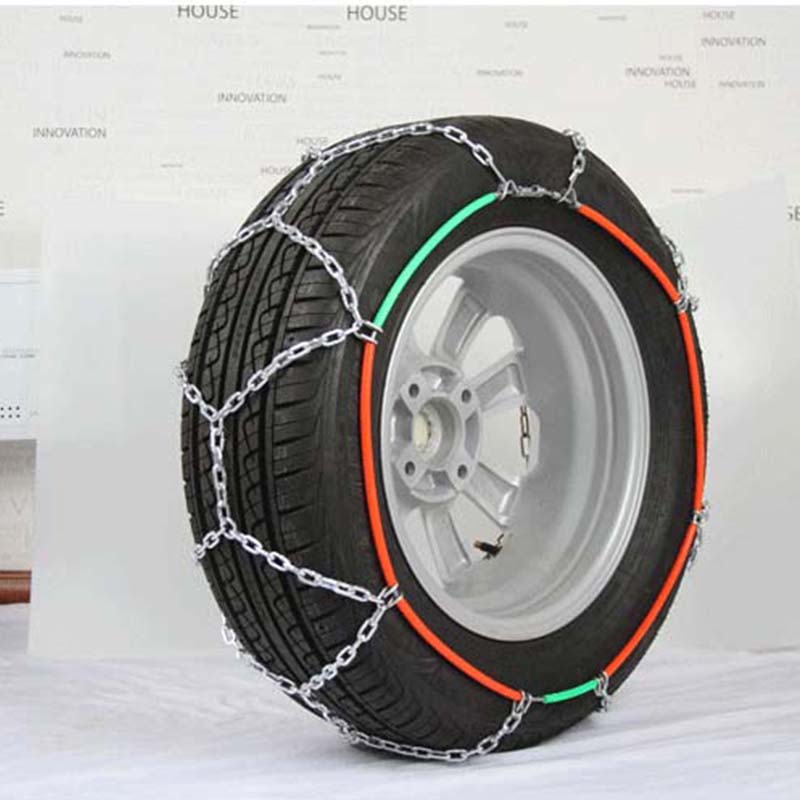 "
"
Titan also tests LSW tires on construction and mining equipment. The results will be announced as soon as the trials are over.
Wheel design, tire size and marking, indicator lamps – these are the important topics you can learn thanks to the new modules translated into Russian in the ELECTUDE e-learning system.
An integral part of the chassis of the car is the wheel. The purpose of the wheels is to ensure the movement of the vehicle. Also among the functions of the wheels is smoothing out bumps from road bumps.
What are the wheels made of?
Discs. Tire mounting bases. They help to transfer the torque from the drive shafts to the tire, as well as the braking torque from the brake mechanism.
Hubs . They are an integral part of the front axle (trunnion) or drive axle. They act as a connector between the shaft and the rim. Needed to transmit torque. The most common hubs are with angular contact ball bearings and single row roller bearings. In models with electronically controlled braking system, the hub is combined with the wheel speed sensor. ABS is used to prevent the wheels from locking up and to keep the vehicle under control when braking. Hubs with an integrated speed sensor are manufactured completely closed. They cannot be dismantled, repaired, and their service life is equal to the duration of the car.
Needed to transmit torque. The most common hubs are with angular contact ball bearings and single row roller bearings. In models with electronically controlled braking system, the hub is combined with the wheel speed sensor. ABS is used to prevent the wheels from locking up and to keep the vehicle under control when braking. Hubs with an integrated speed sensor are manufactured completely closed. They cannot be dismantled, repaired, and their service life is equal to the duration of the car.
Rims. The role of the rim is to connect the tire to the rim. On passenger cars and light trucks, non-separable (one-piece) rims are installed. On heavy-duty commercial vehicles, both non-separable and collapsible rim designs are used. If I use collapsible rims on the wheel, I cannot use a tubeless tire. And when mounting chamber models, rim tapes are used. They are needed so that there is no pinching of the camera between the rim elements. Collapsible rims - flat, non-collapsible, mainly - with a deep mounting stream.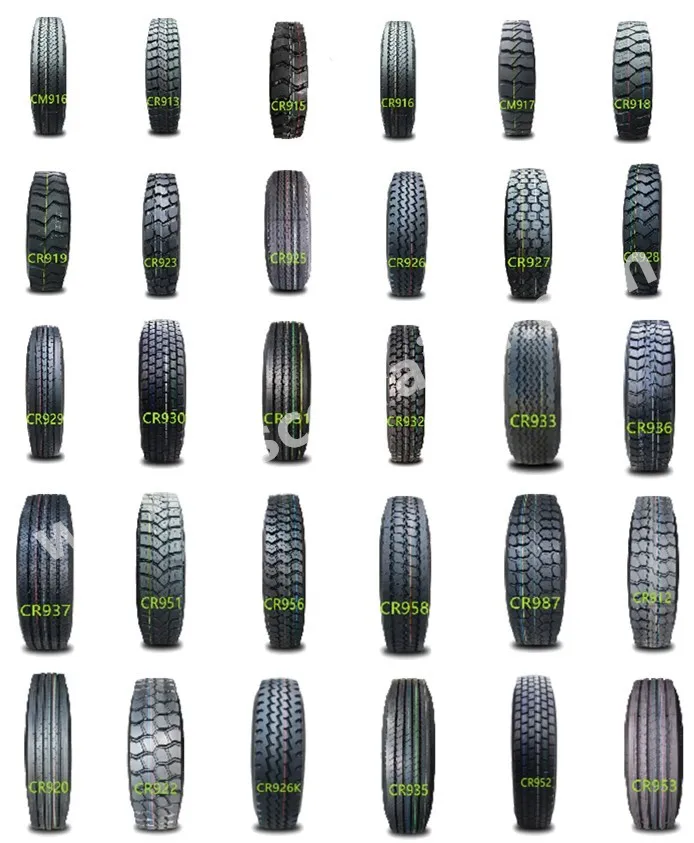
Tires. Tires mounted on wheel rims. They take on the function of absorbing shocks from small bumps in the roadway. The main elements of a standard tire are the carcass, beads, side part, tread and breaker - a protective element that gives the tire rigidity (it is made from several layers of a rubber band reinforced with a metal cord).
When choosing wheels, it is important that they justify themselves in a number of ways:
Passenger cars have 4 wheels: two wheels per axle. This is the same number for a standard truck, but if necessary, a cargo vehicle can have more wheels or twin wheels can be used.
This is the same number for a standard truck, but if necessary, a cargo vehicle can have more wheels or twin wheels can be used.
The following tire designs are common on truck axles:
Before ordering a truck, you should consider what it will be used for. Based on the purpose of the vehicle, you decide which version of the wheel is right for you.
For the correct choice, the following parameters should be taken into account:
Payload
How much weight you will be transporting (the axle load is taken into account). Exceeding the maximum load specified by the manufacturer can be dangerous.
Purpose
What surface will you use the car on most often? For example, it can be sand or asphalt.
How you plan to use the vehicle. Consider how far you will be traveling.
Costs
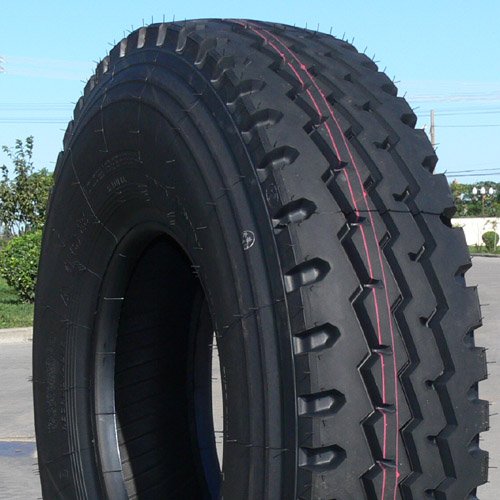
Dimensions
There may also be certain requirements, such as the distance between the right and left wheels.
Single bar
Trucks often use single tires.
This design means that there is only one tire on each side of the axle.
Single tires often used
Trucks often use dual tires.
This design implies that a set of two identical wheels is placed on both sides of the axle.
Solutions frequently used:
Advantage of twin tires over single tires:
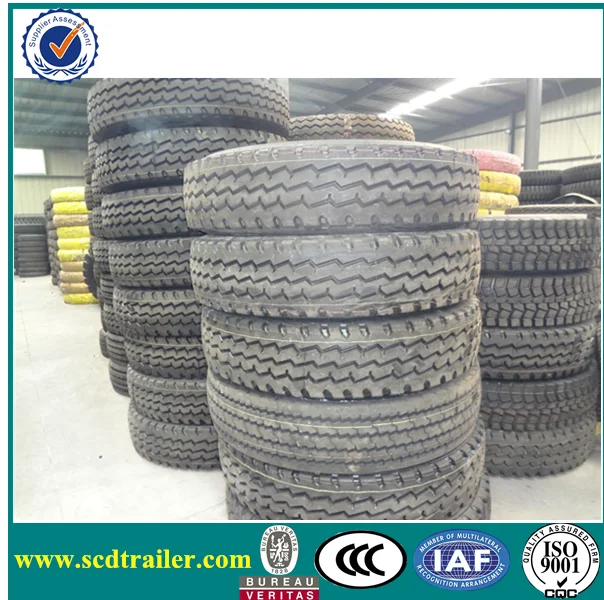
Driving and braking forces are distributed over four tires of one axle. This reduces the load on each tire.
Unlike a dual tire, an extra wide tire consists of a single wide tire.
As a rule, an extra-wide single tire is already a dual tire.
Extra wide single tire or super single is an alternative to dual models.
The extra wide tire is used in the same cases as the dual tire.
Benefits:
As in other modules, after studying the theory, students are offered testing to consolidate the material and understand how it was learned.
The module “Dimension and marking of tires” is closely related to the previous module. The parameters given in the marking indicate the main dimensions and design features of the tire, as well as the possibility of its use in various road conditions and seasons. The marking carries information about its compatibility with the wheel rim.
The parameters given in the marking indicate the main dimensions and design features of the tire, as well as the possibility of its use in various road conditions and seasons. The marking carries information about its compatibility with the wheel rim.
The quality of rubber, the convenience of driving a vehicle, the ability to use it on a particular road surface in a certain season directly depend on the parameters contained in this marking. Its compatibility with a particular disk (its size) also depends on the marking.
Tire sidewalls are marked with alphanumeric markings that contain information about the tire.
As an example, consider the following tire marking: 315/70R 22.5 154/150L.
After the theoretical part, the module contains a practical task.
LMS ELECTUDE has a special test to test your knowledge on the topic "Dimensions and markings of tires".
You can only move to the next question if the previous answer is correct. This approach motivates students to initially carefully study the theory and perform practical tasks with high quality. After all, the inability to answer each test several times increases the level of responsibility. In this case, the student can always go back, but only to check the answers. It is very comfortable.
Pay attention! Through our catalog you can purchase access to the electronic interactive program "Tires, wheels and tire fitting".
Among the new modules translated into Russian, there is a module focused on the study of control lamps.
The indicator lamp provides the driver with up-to-date information about the operation of the truck, for example, it indicates whether a particular system is active or not.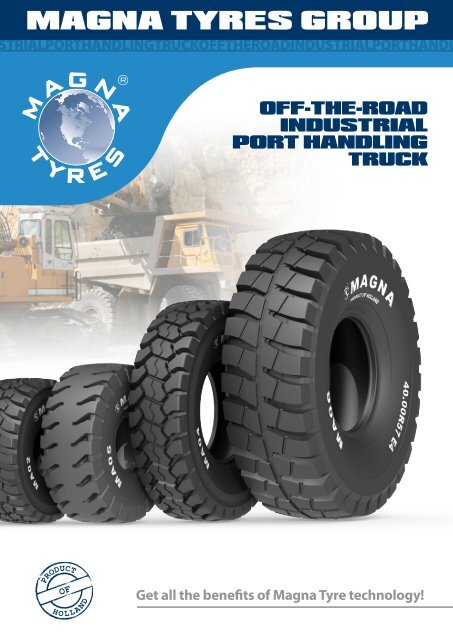
The warning light also indicates system malfunctions so that the driver knows when it is safe to continue driving and when to stop immediately.
Warning lamps are checked before starting the engine. Turn the ignition key to position 1 to turn on the warning lights and make sure they work.
The warning lights have different colors and can be active or passive.
Active indicator lamps come on when the corresponding system is working properly. Examples of active warning lamps are dipped beam headlamps, high beam headlamps or indicators.
Passive warning lamps are used when a failure occurs in the system, such as a drop in oil pressure, a failure in the charging system or in the brake system.
Pilot lamps are available in different colors. Each color has its own meaning and requires a certain reaction from the driver.
Green/blue. The system is on and working properly. You can safely continue to move.
Orange/yellow.